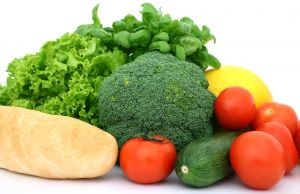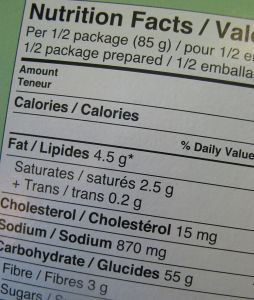By Craig Valency, MA, CSCS
Considering we’re in the middle of a youth obesity epidemic, why am I saying that kids need to eat more calories? Well, that’s not exactly the whole story. The two big factors at the root of the problem are sedentary behavior and eating too many of the wrong kind of calories.
Eating processed, sugary foods can actually lead to cravings for empty calories. If kids are moving less, eating more, and eating a diet high in sugar, the deck is stacked against them.
When eating a nutrient-rich, balanced diet, however, kids and teens need more calories than you might think. You see, children and adolescents have developing brains and rapidly growing bones, muscles, and neural connections. They have distinct nutritional needs that should not be compromised, especially if they are very active.
To support the rapid growth phases that children and adolescents go through, it is imperative that they get:
- More fat (even saturated fat!)
- More cholesterol
- More protein
And, one of the most important things that children need – drum roll please…
- More CALORIES (the good kind of course!)
I know the word calorie sends chills down people’s spines. But a calorie is simply a measurement of energy. It can be in the form of the energy in the food you consume or the energy you expend while exercising, or in just being alive.
As long as kids aren’t getting all their calories from “Frankenfoods,” and they lead a reasonably active lifestyle, then they probably need more calories then you think.
In fact, the biggest daily calorie requirement in the entire lifecycle is from 16 – 18 years old, at about 3200 calories per day for active boys, and 2400 calories for active girls. After 18 years old, calorie requirements steadily decline with increasing age.
Children are also less metabolically efficient than adults, so they expend more calories than adults while doing the same activity. For example, the energy requirement for kids during walking and running can be as much as 30% higher than in adults (Meyer, O’Connor & Shirreffs, 2007). Moreover, physical training requires additional calories beyond growth, development, and basal energy of children and teens (Petrie, Stover & Horswill, 2004).
If a teenager, or even an adult, is trying to gain weight and build muscle through a targeted strength training program, they actually have to take in more calories than they burn, creating a positive energy balance.
Getting in the right amount of calories is crucial for proper growth and development. According to research from Meyer, O’Connor & Shirreffs, (2007), some of the long-term dangers of kids not taking in enough calories include:
- Short stature
- Delayed puberty
- Menstrual irregularities
- Poor bone health
The recommended calories per day for youths according to the Institute of Medicine is (Vadiveloo, Zhu, Quatromoni, 2009):
- 3 – 6 year old active boys: 1400 – 1800 calories per day & girls: 1400 – 1600 calories
- 7 – 10 year old active boys: 1800 – 2200 calories per day & girls: 1800 – 2000 calories
- 11 – 18 year old active boys: 2000 – 3200 calories per day & girls: 2000 – 2400 calories
- 19 – 20 year old active men: 2600 – 3000 calories per day & women: 2000 – 2400 calories
Examples of energy requirements for specific ages and activity levels (Petrie, Stover & Horswill, 2004):
- 9 year old sedentary girl: 1415 calories per day
- 13 year old very active boy: 3038 calories per day
- 14 ear old sedentary girl: 1718 calories per day
- 18 year old very active boy: 3804 calories per day
Now that we know kids need to eat more calories, here are some tips on the best way to pack in those extra calories each day:
- Eat foods that are both nutrient dense AND calorie dense
A blueberry pop tart is calorie dense; but fresh blueberries with full-fat Greek yogurt is nutrient dense and calorie dense – and it actually tastes good!
- Don’t skip meals
Make sure they get three meals per day and one or two snacks between meals. Ensure that there is always protein, vegetables and high quality fat at every meal. And yes, breakfast is the most important meal of the day.
- Eat fat
Fat is calorically dense with 9 calories per gram, while protein and carbs have just 4 calories per gram. Smart food choices include full fat dairy such as cheese, yogurt, butter, eggs (with the yolks!), avocados, olive oil, coconut oil, and nuts.
The fat also allows them to absorb the fat-soluble vitamins that are in the food they eat. Fat also lowers the glycemic impact of any starches such as potatoes and rice. This keeps their blood sugar more regulated to ensure long-term energy, without energy crashes throughout the day. This strategy also reduces the possibility of unwanted fat gain.
- Limit bulky, high fiber “health” foods
Some “healthy” foods are not optimal for maximizing nutrient density and calories. For instance, limit bulky foods such as whole grains, pasta, mashed potatoes, brown rice, beans, and high fiber cereals.
These foods are generally lower in nutrient density and higher in bulk than lean proteins and cruciferous vegetables. For adults, this may promote satiety and lower caloric intake, which could be desirable. But for kids, it could prematurely fill them up before they eat the proper amount of calories, along with the optimal amount of protein and fat for healthy growth and development.
I know, for instance, that as a kid, I could eat a massive bowl (or two) of cereal for breakfast or an entire plate of mashed potatoes or spaghetti as my dinner! Of course kids should eat many of these foods, but just make sure they don’t fill up on them first. Try to mix the bulky foods together with protein and fat for a one pot meal, such as chili with meat and beans, stew with potatoes, or shepherds pie.
So, the moral of the story is to first make sure kids understand what healthy eating is and how they will benefit from it (more energy, more muscle, less fat, more endurance, etc.). Next, make sure they are getting in enough nutrient dense calories, with protein and fat at each meal. Don’t let them skip meals. And finally, remember that they are kids, so having some yummy, not so healthy, food without guilt is fine as long as they are getting enough of the good stuff first.
I’d love to hear from you. What are some of your strategies to get kids to eat enough food, make better choices, and actually like it?
References
Meyer, F., O’Connor, H., & Shirreffs, S. M. (2007). Nutrition for the young athlete. Journal of Sports Sciences, 25(S1), S73-S82. doi: 10.1080/02640410701607338
Petrie, H. J., Stover, E. A., & Horswill, C. A. (2004). Nutritional concerns for the child and adolescent competitor. Nutrition, 20(7/8), 620-631. doi: 10.1016/j.nut.2004.04.002
Vadiveloo, M., Zhu, L., & Quatromoni, P. A. (2009). Diet and physical activity patterns of school-aged children. Journal of the American Dietetic Association, 109(1), 145-151. doi: 10.1016/j.jada.2008.10.012
Craig Valency, MA, CSCS, president and co-founder of SPIDERfit, has been a personal trainer for the last 11 years. He is currently working at Fitness Quest 10 in San Diego, an elite personal training and athletic conditioning facility. He specializes in youth strength and conditioning programs that promote physical literacy, injury prevention and optimal performance. Along with training youths from 6 to 18 years of age for general fitness, Craig has also worked with some of the top junior tennis players in the world. He has been a physical education consultant for the Stevens Point school district in Wisconsin for the last 3 years, helping revamp the district wide programming for the K-12 PE curriculum. Craig earned his bachelor degree from UCLA, and Masters Degree in Kinesiology from San Diego State University.





Connect with SPIDERfit!